
Lalomanu: Samoa's Pristine Paradise
Experience the serene beauty of Lalomanu in Samoa, where pristine beaches, vibrant coral reefs, and rich Samoan culture await.
Lalomanu is a small coastal village on the southeastern tip of Upolu Island in Samoa. Known for its stunning white-sand beaches and crystal-clear turquoise waters, Lalomanu Beach is often considered one of the best beaches in the South Pacific. The tranquil environment and natural beauty make it a perfect getaway for those looking to relax and unwind. The village offers more than just beautiful beaches. Explore the vibrant coral reefs teeming with marine life by snorkeling or diving. The nearby Aleipata Islands can be reached by a short boat ride, providing even more opportunities for adventure and exploration. The local community is welcoming, and visitors can experience traditional Samoan culture through dance performances and local crafts. Lalomanu is also an excellent base for exploring the rest of Upolu Island. Take a scenic drive to the To-Sua Ocean Trench, a unique swimming hole surrounded by lush gardens, or hike to the top of Mount Fiamoe for breathtaking panoramic views. Whether you're an adventurer or just looking to soak up the sun, Lalomanu offers something for everyone.
Local tips in Lalomanu
- Visit Lalomanu Beach early in the morning for the best experience and fewer crowds.
- Rent snorkeling gear to explore the vibrant coral reefs just offshore.
- Try local Samoan dishes at the village eateries for an authentic culinary experience.
- Bring cash as not all local businesses accept credit cards.
- Take a boat trip to the nearby Aleipata Islands for more secluded beaches and snorkeling spots.
Lalomanu: Samoa's Pristine Paradise
Lalomanu is a small coastal village on the southeastern tip of Upolu Island in Samoa. Known for its stunning white-sand beaches and crystal-clear turquoise waters, Lalomanu Beach is often considered one of the best beaches in the South Pacific. The tranquil environment and natural beauty make it a perfect getaway for those looking to relax and unwind. The village offers more than just beautiful beaches. Explore the vibrant coral reefs teeming with marine life by snorkeling or diving. The nearby Aleipata Islands can be reached by a short boat ride, providing even more opportunities for adventure and exploration. The local community is welcoming, and visitors can experience traditional Samoan culture through dance performances and local crafts. Lalomanu is also an excellent base for exploring the rest of Upolu Island. Take a scenic drive to the To-Sua Ocean Trench, a unique swimming hole surrounded by lush gardens, or hike to the top of Mount Fiamoe for breathtaking panoramic views. Whether you're an adventurer or just looking to soak up the sun, Lalomanu offers something for everyone.
When is the best time to go to Lalomanu?
Iconic landmarks you can’t miss
To-Sua Ocean Trench
Explore the stunning To-Sua Ocean Trench, a natural paradise in Samoa with crystal-clear waters and lush landscapes, perfect for swimming and relaxation.

Piula Cave Pool
Explore the serene Piula Cave Pool in Faleapuna, a hidden gem offering crystal-clear waters and breathtaking tropical scenery for an unforgettable experience.

Taufua Beach Fales
Experience the beauty of Samoa at Taufua Beach Fales, where stunning beaches meet traditional hospitality in a tropical paradise.

Palolo Deep Marine Reserve
Explore the vibrant underwater world of Palolo Deep Marine Reserve, where snorkeling and diving reveal stunning coral reefs and diverse marine life.

Samoa Cultural Village
Explore the vibrant traditions and rich culture of Samoa at the Samoa Cultural Village, an immersive experience for every traveler.

Robert Louis Stevenson Museum
Explore the enchanting Robert Louis Stevenson Museum in Apia, where literature, history, and stunning natural beauty intertwine.

Papaseea Sliding Rocks
Discover the thrilling Papaseea Sliding Rocks, a natural water slide paradise in Samoa, offering adventure and stunning tropical beauty.

Faofao Beach Fales
Discover the beauty of Samoa at Faofao Beach Fales, where traditional lodging meets breathtaking beach views and delicious local cuisine.

Aga Reef Resort
Discover the beauty of Samoa at Aga Reef Resort, a luxurious beachfront oasis in Lalomanu offering stunning views and exceptional service.

Togitogiga Waterfall
Experience the Stunning Togitogiga Waterfall in Samoa, a serene natural wonder perfect for swimming, relaxing, and connecting with nature.

Papapapaitai Falls
Discover the breathtaking Papapapaitai Falls, a stunning waterfall in Samoa perfect for nature lovers and photography enthusiasts.

O Le Pupu-Pue National Park
Explore the natural wonders of O Le Pupu-Pue National Park, a stunning national park in Sa'agafou, known for its lush landscapes and diverse wildlife.
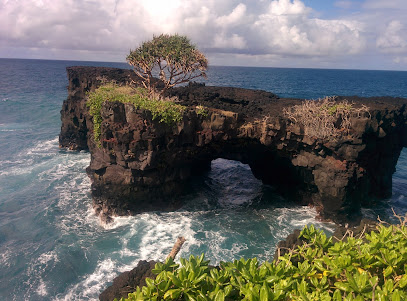
Lalomanu Beach
Discover the pristine shores of Lalomanu Beach in Samoa, a serene paradise with turquoise waters and vibrant coral reefs perfect for relaxation and adventure.

Lalomanu Beach Fales
Experience the breathtaking beauty of Lalomanu Beach Fales, a tropical paradise in Samoa offering relaxation, adventure, and vibrant local culture.

Litia Sini Beach Resort
Experience the beauty of Lalomanu Beach at Litia Sini Beach Resort, where tranquility meets adventure in a tropical paradise.

Unmissable attractions to see
To-Sua Ocean Trench
Experience the breathtaking beauty of To-Sua Ocean Trench, a serene swimming paradise surrounded by lush landscapes in Samoa.

Piula Cave Pool
Explore the serene beauty of Piula Cave Pool in Faleapuna, Samoa, where crystal-clear waters and lush landscapes await your discovery.

Palolo Deep Marine Reserve
Explore Palolo Deep Marine Reserve: A breathtaking underwater paradise in Samoa, perfect for snorkeling, diving, and nature appreciation.

Robert Louis Stevenson Museum
Explore the enchanting Robert Louis Stevenson Museum in Apia, where literary history meets tropical beauty, honoring the legacy of a legendary author.

Robert Louis Stevenson Museum
Explore the enchanting Robert Louis Stevenson Museum in Apia, Samoa, where literature, history, and stunning natural beauty converge.
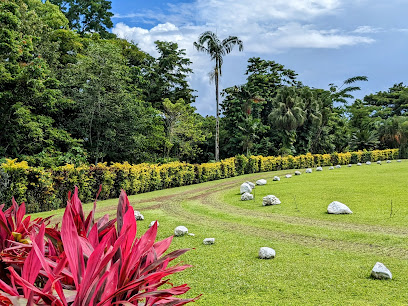
Afu Aau Waterfalls
Experience the breathtaking beauty of Afu Aau Waterfalls in Vailoa, Samoa, where nature’s serenity meets stunning cascades and tranquil pools.
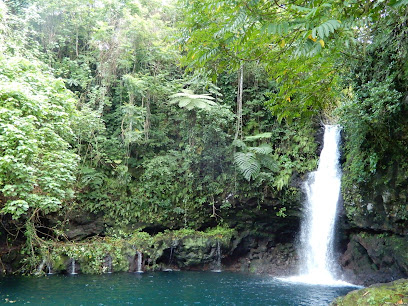
Pacific Jewell Gift Shop & Garden Café
Explore unique local crafts and savor fresh dishes in the serene garden café at Pacific Jewell, a must-visit in Apia, Samoa.

Immaculate Conception Cathedral
Explore the Immaculate Conception Cathedral in Apia, a stunning architectural gem that embodies the spiritual heart of Samoa's rich cultural heritage.

Togitogiga Waterfall
Explore the enchanting Togitogiga Waterfall in Samoa, a stunning natural gem surrounded by lush greenery and perfect for relaxation and adventure.
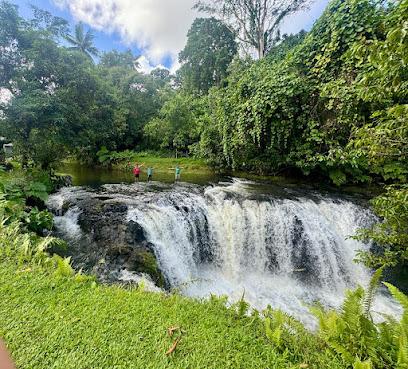
Papapapaitai Falls
Experience the awe-inspiring Papapapaitai Falls in Samoa, where nature's beauty meets tranquility amidst lush landscapes.

Sopo'aga Falls Viewpoint
Experience the breathtaking beauty of Sopo'aga Falls Viewpoint, a serene escape in Samoa's lush landscapes for nature lovers and photographers.

O Le Pupu-Pue National Park
Discover the breathtaking landscapes and rich biodiversity of O Le Pupu-Pue National Park, a hidden gem in the heart of Samoa.

Baha'i House Of Worship Samoa
Discover the Baha'i House of Worship in Samoa, a serene sanctuary of peace and unity set amidst stunning gardens and captivating architecture.

Janet's Samoa
Explore Janet's Samoa in Apia: A Cultural Oasis for Unique Gifts and Authentic Samoan Artistry.

Sauniatu Waterfall
Immerse yourself in the tranquility of Sauniatu Waterfall, a stunning natural oasis in Samoa offering breathtaking views and a refreshing swimming experience.

Essential places to dine
Paddles Restaurant
Discover Paddles Restaurant in Apia - where traditional Samoan flavors meet contemporary dining experiences amidst breathtaking views.

Giordano's Pizzeria // Samoa
Discover authentic Italian flavors at Giordano's Pizzeria in Apia, Samoa – where every pizza tells a story.

The Edge Marina, Samoa
Discover relaxation at The Edge Marina in Samoa – where coastal beauty meets vibrant dining experiences.

Scalini's Restaurant
Experience the vibrant flavors of Samoa at Scalini's Restaurant, where local ingredients meet international culinary creativity.

Tifaimoana Indian Restaurant
Experience authentic Indian cuisine at Tifaimoana Indian Restaurant in Apia - a must-visit for spice lovers!
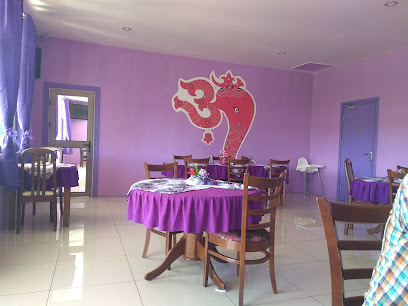
Pinati Restaurant
Experience authentic Samoan cuisine at Pinati Restaurant in Apia – where every dish tells a story of island culture.
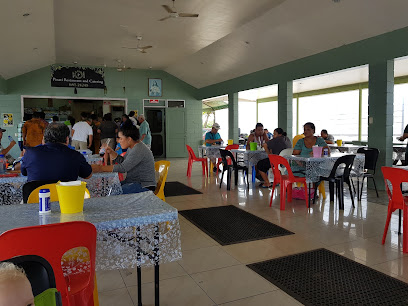
Sails Restaurant & Bar
Discover authentic Italian cuisine at Sails Restaurant & Bar in Apia, where local flavors meet warm hospitality.

Kokobanana Bar & Grill
Discover the vibrant flavors of Samoa at Kokobanana Bar & Grill in Apia - where local cuisine meets international flair.

Bistro Tatau Restaurant
Experience the vibrant flavors of Samoa at Bistro Tatau - where local meets international in a cozy setting.

Amanaki Restaurant
Experience authentic Samoan cuisine at Amanaki Restaurant in Apia – a perfect blend of tradition and flavor.

Island Grill - Steak & Seafood
Experience authentic Pacific cuisine at Island Grill - Steak & Seafood in Apia, where fresh flavors meet island hospitality.
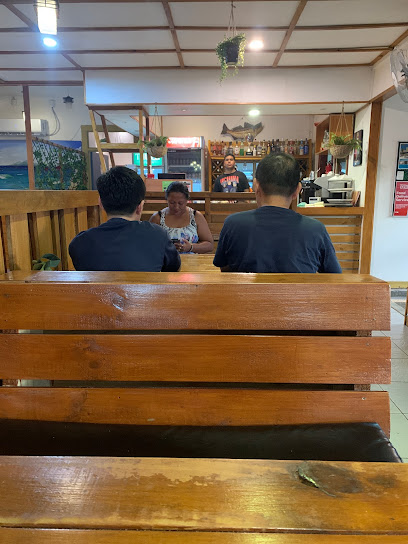
Roko's Restaurant
Experience authentic Samoan flavors at Roko's Restaurant in Apia – where local ingredients meet culinary creativity.

Taumeasina Restaurant & Bar
Experience authentic Samoan flavors at Taumeasina Restaurant & Bar with stunning ocean views and warm hospitality.

Tandoori Indian Restaurant
Savor authentic Indian cuisine at Tandoori Indian Restaurant in Apia - where every dish tells a story.
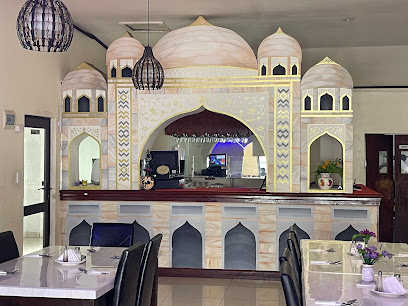
Italiano's Pizza
Experience the authentic taste of Italy at Italiano's Pizza in Apia - where every slice tells a story.

Markets, malls and hidden boutiques
Taufua Beach Fales
Discover the beauty of Samoa at Taufua Beach Fales, a serene resort hotel promising relaxation, adventure, and authentic cultural experiences.
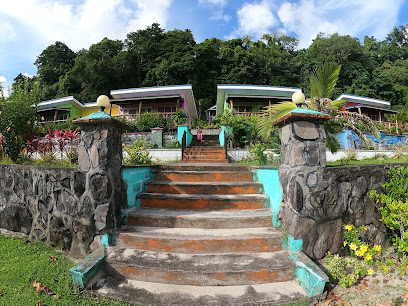
Pacific Jewell Gift Shop & Garden Café
Explore unique gifts and local flavors at the Pacific Jewell Gift Shop & Garden Café in Apia, a charming oasis of creativity and taste.

Eveni Carruthers
Explore authentic Samoan gifts and clothing at Eveni Carruthers, a vibrant shop in Apia that showcases the beauty of local craftsmanship.

All Things Sweet Samoa
Experience the sweet side of Samoa at All Things Sweet Samoa, where delectable cakes and cupcakes create unforgettable moments.

Janet's Samoa
Explore Janet's Samoa for unique gifts and cultural treasures that embody the spirit of Samoa, perfect for any tourist seeking authentic souvenirs.

Tanoa Samoa
Discover the vibrant spirit of Samoa through fashion at Tanoa Samoa, your go-to clothing store in Apia.

Mailelani Samoa Body Care
Explore authentic Samoan beauty and wellness products at Mailelani Samoa Body Care, where tradition meets quality in every handcrafted item.

FIA's minimart & BBQ House
Discover the authentic flavors of Samoa at FIA's Minimart & BBQ House, your go-to spot for local delicacies and convenience shopping in Vaitele.

Linettacollections Samoa
Explore Linettacollections Samoa for unique home goods that beautifully capture the essence of Samoan craftsmanship and culture.

Le Well
Explore Le Well in Apia for an exceptional selection of home goods, blending local craftsmanship with quality imports, perfect for every visitor.

Frankies Hypermarket
Experience the vibrant culture of Samoa at Frankies Hypermarket - your go-to grocery store for local flavors and essentials.

IT ZONE LTD, Lotemau center Branch
Discover the latest in electronics and mobile solutions at IT Zone Ltd in Apia, your one-stop tech shop for all your gadget needs.

Samusu Convenience & Bakery Store
Experience the flavors of Samusu at the Convenience & Bakery Store, your one-stop shop for groceries and delightful local treats.
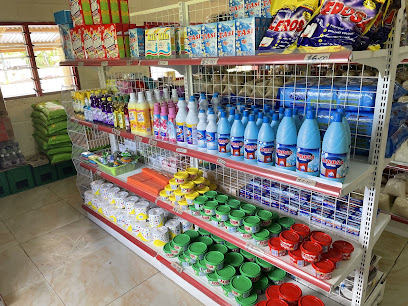
Horizon Surf Samoa
Discover unique surf apparel and local Samoan designs at Horizon Surf Samoa in Apia, a vibrant destination for beach lovers and fashion enthusiasts.

Plantation House
Explore the vibrant clothing store in Apia, Plantation House, offering unique, elegant, and colorful fashion pieces that celebrate Samoan culture.
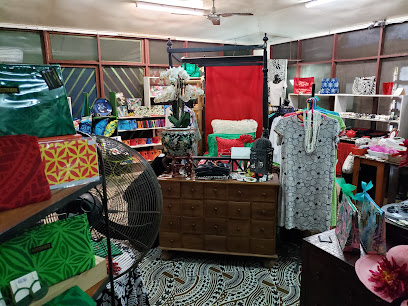
Essential bars & hidden hideouts
The Edge Marina, Samoa
Discover The Edge Marina in Samoa, where vibrant dining meets stunning coastal views in a perfect blend of relaxation and adventure.

Sails Restaurant & Bar
Experience exquisite local flavors and stunning ocean views at Sails Restaurant & Bar in Apia, the heart of Samoa's culinary scene.

Kokobanana Bar & Grill
Experience the best of Samoan cuisine at Kokobanana Bar & Grill, where vibrant flavors meet a lively atmosphere in Apia.

Taumeasina Restaurant & Bar
Experience the vibrant flavors of Samoa at Taumeasina Restaurant & Bar, where traditional cuisine meets contemporary dining in a stunning tropical setting.

Lalomanu Beach Fales
Discover tranquility at Lalomanu Beach Fales, where stunning views and rich Samoan culture await your exploration.

Litia Sini Beach Resort
Discover the serene beauty of Litia Sini Beach Resort on Lalomanu Beach, where relaxation meets the vibrant culture of Samoa.

Lupe's Beach Fale and Resort
Discover the flavors of Samoa at Lupe's Beach Fale and Resort, a beachfront gem offering exquisite local cuisine and breathtaking ocean views.

LuluLosa Beach Fales Bar & Grill
Discover the taste of paradise at LuluLosa Beach Fales Bar & Grill, where every meal is a delight and the views are breathtaking.

Anita's Beach Bungalows Lalomanu
Discover the tranquil beauty of Anita's Beach Bungalows in Lalomanu, Samoa – where relaxation meets stunning ocean views.

Cocktails On the Rocks
Discover the vibrant ambiance of Cocktails On the Rocks, where stunning ocean views meet refreshing tropical cocktails in Apia, Samoa.
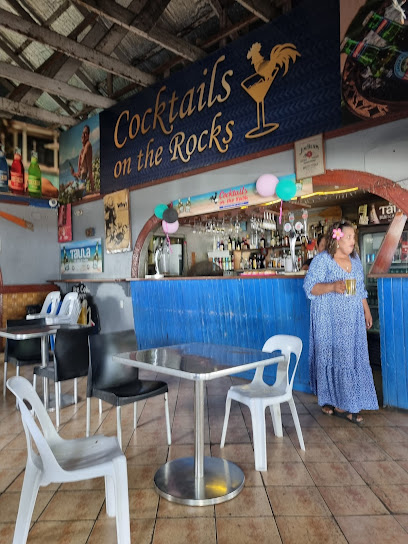
Anita's Beach Bar/Restaurant
Experience the perfect blend of relaxation and local flavors at Anita's Beach Bar in Lalomanu, Samoa.

Ulalei Accomodation Bar & Restaurant
Discover the charm of Apia at Ulalei Accommodation Bar & Restaurant, your cozy retreat with authentic Samoan flavors.

Apia Yacht Club Bar and Restaurant
Experience the stunning ocean views and delicious local cuisine at Apia Yacht Club Bar and Restaurant, a true Samoan gem for all travelers.

Y-Not Lounge Bar Samoa
Experience the vibrant atmosphere of Y-Not Lounge Bar in Apia, where tropical cocktails and live music create the perfect island escape.

Kevin sisson
Experience the vibrant local nightlife at Kevin Sisson, the perfect bar for tourists in Salua to unwind and connect.

Local Phrases
-
- HelloTalofa
[Tah-loh-fah] - GoodbyeFa
[Fah] - YesIoe
[Ee-oh-eh] - NoLeai
[Leh-eye] - Please/You're welcomeFa'amalie
[Fah-ah-mah-lee-eh] - Thank youFa'afetai
[Fah-ah-feh-tah-ee] - Excuse me/SorryTulou lava
[Too-loh-lah-vah] - How are you?O ai oe?
[Oh-eye-oh-eh] - Fine. And you?Lelei. Oe?
[Leh-leh-ee. Oh-eh] - Do you speak English?E te lelei ona o le fa'ailoa i le fa'ainga Ingilisi?
[Eh teh-leh-ley oh-nah oh-leh fah-ai-loh-ah ee-leh fah-ah-eeng-ee-lee-see] - I don't understandE le mafai ona ou te fiafia
[Eh leh mah-fai oh-nah oh-teh fee-ah-fee-ah]
- HelloTalofa
-
- I'd like to see the menu, pleaseOu te fia vaega i le mene, fa'amalie
[Oh-oo teh fee-ah vah-eh-gah ee-leh meh-neh, fah-ah-mah-lee-eh] - I don't eat meatE le oua meaai u'a
[Eh leh oh-oo-ah meh-ah-ah-ee oo-ah] - Cheers!Manuia!
[Mah-noo-ee-ah] - I would like to pay, pleaseOu te fia tu'u, fa'amalie
[Oh-oo teh fee-ah too-oo, fah-ah-mah-lee-eh]
- I'd like to see the menu, pleaseOu te fia vaega i le mene, fa'amalie
-
- Help!Tulou!
[Too-loh-oo] - Go away!Aua!
[Ah-oo-ah] - Call the Police!Fa'afesootai i le Fa'amasinoga!
[Fah-ah-feh-soh-oh-tah-ee ee-leh fah-ah-mah-see-noh-gah] - Call a doctor!Fa'afesootai i le foma'i!
[Fah-ah-feh-soh-oh-tah-ee ee-leh foh-mah-ee] - I'm lostUa ou te malolo
[Oo-ah oh-oo teh mah-loh-loh] - I'm illUa ou te mate
[Oo-ah oh-oo teh mah-teh]
- Help!Tulou!
-
- I'd like to buy...Ou te fia faatau...
[Oh-oo teh fee-ah fah-ah-tah-oo] - I'm just lookingOu te tatala
[Oh-oo teh tah-tah-lah] - How much is it?O le a le tele?
[Oh leh ah leh teh-leh] - That's too expensiveE leai se mea e le fa'amaoni
[Eh leh-eye seh meh-ah eh leh fah-ah-mah-oh-nee] - Can you lower the price?E mafai ona i ai le fa'amoemoeina o le tau
[Eh mah-fai oh-nah ee-ah leh fah-ah-moh-eh-moh-eh-ee-nah oh leh tah-oo]
- I'd like to buy...Ou te fia faatau...
-
- What time is it?O le a le taimi?
[Oh leh ah leh tah-ee-mee] - It's one o'clockO le tasi
[Oh leh tah-see] - Half past (10)I le fa le umi
[Ee leh fah leh oo-mee] - MorningAlofaaga
[Ah-loh-fah-ah-gah] - AfternoonAfiafi
[Ah-fee-ah-fee] - EveningAso
[Ah-soh] - YesterdayAnanafi
[Ah-nah-nah-fee] - TodayAso nei
[Ah-soh neh-ee] - TomorrowAso taeao
[Ah-soh tah-eh-ah-oh] - 1Tasi
[Tah-see] - 2Lua
[Loo-ah] - 3Tolu
[Toh-loo] - 4Fa
[Fah] - 5Lima
[Lee-mah] - 6Ono
[Oh-noh] - 7Fitu
[Fee-too] - 8Valu
[Vah-loo] - 9Iva
[Ee-vah] - 10Umi
[Oo-mee]
- What time is it?O le a le taimi?
-
- Where's a/the...?O fea le...?
[Oh feh-ah leh] - What's the address?O le a le tuatusi?
[Oh leh ah leh too-ah-too-see] - Can you show me (on the map)?E mafai ona fa'ailoa mai ia te a'u (i le mapa)?
[Eh mah-fai oh-nah fah-ah-ee-loh-ah my ee-ah teh ah-oo (ee leh mah-pah)] - When's the next (bus)?O le a le fa'ai'uga o le fausia?
[Oh leh ah leh fah-ah-ee-oo-gah oh leh fow-see-ah] - A ticket (to ....)Tiketi (i ....)
[Tee-keh-tee (ee)]
- Where's a/the...?O fea le...?
History of Lalomanu
-
Lalomanu, located on the southeastern coast of Upolu, Samoa, has a rich history that stretches back thousands of years. The area was first settled by Polynesian navigators who arrived around 1000 BCE. These early inhabitants developed a sophisticated society characterized by their expertise in navigation, fishing, and agriculture. They built traditional fale (houses) and established a community that thrived on the abundant natural resources of the sea and land.
-
In the early 19th century, European explorers and missionaries began arriving in Samoa, including Lalomanu. The London Missionary Society played a significant role in the region, converting many Samoans to Christianity and introducing Western education and healthcare. The local culture underwent significant changes as traditional beliefs and practices were influenced by these new ideas. The village of Lalomanu, like many others in Samoa, saw the construction of churches and schools, which became central to community life.
-
In the late 19th century, Samoa became a focal point for colonial ambitions. In 1899, the Tripartite Convention divided the Samoan archipelago between Germany and the United States, with Lalomanu falling under German control. The German administration built infrastructure and introduced plantation agriculture, which altered the local economy. After World War I, Samoa was mandated to New Zealand, and Lalomanu experienced further changes under this new administration, including the introduction of new laws and economic policies.
-
One of the most significant recent events in Lalomanu's history was the 2009 tsunami. On September 29, 2009, an undersea earthquake triggered a tsunami that struck the southern coast of Upolu, including Lalomanu. The waves caused extensive damage to the village, resulting in loss of life and destruction of property. The community's resilience was demonstrated in the aftermath as they rebuilt homes, infrastructure, and lives with the help of local and international aid. The event has become a poignant part of Lalomanu's history, remembered for both its tragedy and the strength of its people.
-
Today, Lalomanu is renowned for its stunning white-sand beaches and crystal-clear waters, making it a popular destination for tourists. The village has successfully blended traditional Samoan culture with modern amenities to cater to visitors. Tourism has become a vital part of the local economy, providing employment and fostering cultural exchange. Despite the influx of visitors, Lalomanu has managed to preserve its cultural heritage, with traditional arts, crafts, and ceremonies still playing an important role in village life.
Lalomanu Essentials
-
Lalomanu is located on the southeastern coast of Upolu, one of the main islands in Samoa. The nearest international airport is Faleolo International Airport, which is approximately 65 kilometers away from Lalomanu. From the airport, you can take a taxi or arrange for a shuttle service to Lalomanu, which typically takes about 1.5 to 2 hours by road. Another option is to rent a car from the airport, providing the flexibility to explore the island at your own pace.
-
Once in Lalomanu, transportation options include taxis and rental cars. Taxis are readily available but can be relatively expensive for longer distances. Renting a car is a popular option for tourists who wish to explore beyond Lalomanu. There are also local buses that connect Lalomanu with other parts of Upolu, but they run on a less predictable schedule. Bicycles and scooters can be rented for shorter trips and local exploration.
-
The official currency of Samoa is the Samoan Tala (WST). Credit cards are accepted in some hotels, restaurants, and larger shops, but it is advisable to carry cash for smaller establishments and rural areas. ATMs are available, but it is wise to withdraw sufficient cash in the capital, Apia, before traveling to Lalomanu to ensure you have enough funds for your stay.
-
Lalomanu is generally a safe destination for tourists. However, it is important to take standard precautions, such as not leaving valuables unattended and avoiding isolated areas at night. While there are no specific high-crime areas targeting tourists, it is always best to stay vigilant and aware of your surroundings. Petty theft can occur, so keep an eye on your belongings, especially on the beach.
-
In case of an emergency, dial 911 for immediate assistance. The nearest medical facilities are located in Apia, about 1.5 to 2 hours away by road. It is recommended to have travel insurance that covers medical emergencies. For minor health issues, there are pharmacies in Apia where you can purchase over-the-counter medications. Always have a list of emergency contacts and the address of your accommodation.
-
Fashion: Do dress modestly, especially in villages and religious sites. Avoid wearing revealing clothing. Religion: Do respect local customs and traditions. Always ask for permission before entering a fale (traditional house). Public Transport: Do be respectful and courteous to drivers and other passengers. Don’t expect strict adherence to schedules. Greetings: Do greet people with a smile and a 'Talofa' (hello). It’s customary to shake hands. Eating & Drinking: Do try local dishes and accept food offerings graciously. Don’t refuse hospitality, as it is considered impolite.
-
To experience Lalomanu like a local, spend time at the beach and engage with the friendly locals. Participate in a traditional Samoan Sunday umu (earth oven) meal if you get the opportunity. Visit local markets to buy fresh produce and handmade crafts. Attend a fiafia night to enjoy traditional Samoan dance and music. Respect the local customs and ask for permission before taking photos of people.
Trending Landmark in Lalomanu
-
To-Sua Ocean Trench
-
Piula Cave Pool
-
Taufua Beach Fales
-
Palolo Deep Marine Reserve
-
Samoa Cultural Village
-
Robert Louis Stevenson Museum
-
Papaseea Sliding Rocks
-
Faofao Beach Fales
-
Aga Reef Resort
-
Togitogiga Waterfall
-
Papapapaitai Falls
-
O Le Pupu-Pue National Park
-
Lalomanu Beach
-
Lalomanu Beach Fales
-
Litia Sini Beach Resort
Nearby Cities to Lalomanu
-
Things To Do in Apia
-
Things To Do in Mulifanua
-
Things To Do in Leone
-
Things To Do in Tafuna
-
Things To Do in Pago Pago
-
Things To Do in Fagatogo
-
Things To Do in Aua
-
Things To Do in Salelologa
-
Things To Do in Savai'i
-
Things To Do in Fagamalo
-
Things To Do in Manase
-
Things To Do in Asau
-
Things To Do in Falealupo
-
Things To Do in Ha'ano
-
Things To Do in Pangai







